10 of the Longest-Living Cat Breeds
Adobe Stock/tan4ikk
While folklore says that cats have nine lives, the reality is that they just have one. But just how long that lifespan will be depends on many factors, including breed, living conditions, health care, nutrition, and activity level.
If you’re hoping for more than a handful of years with a feline friend, here are the longest-living cats to consider.
How Long Do Cats Live?
The average cat lifespan is more than a decade—13 to 17 years, specifically.
However, that range can be shorter or longer, with some cats living past their teen years. In fact, the longest living cat on record, according to Guinness World Records, was Creme Puff, who reached an impressive age of 38 years old.
Cat Breeds That Live the Longest
1. Siamese
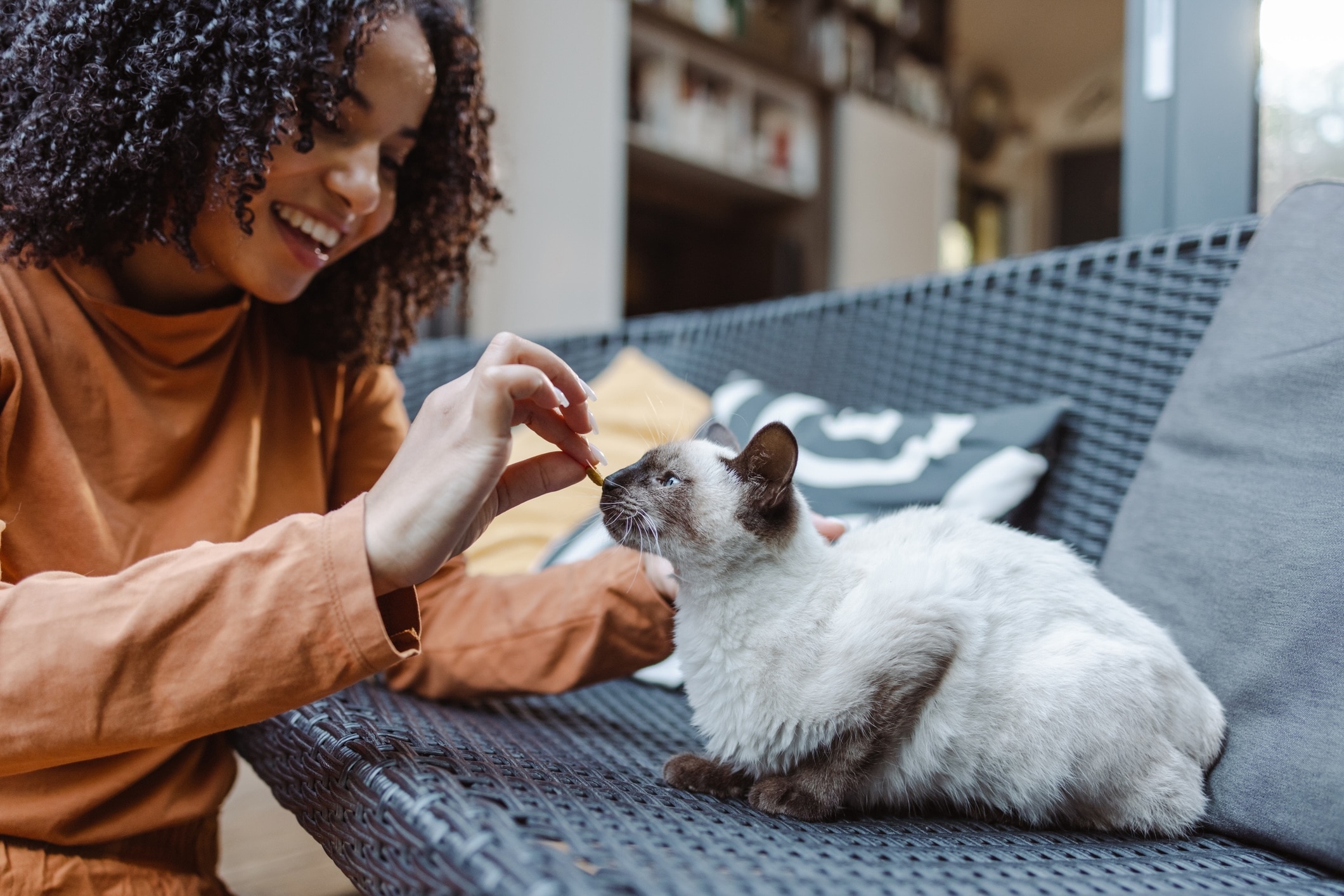
Life expectancy: 15–20 years
Siamese cats bond closely to their pet parents, and you can look forward to up to 20 years of companionship. Siamese cats are known for their inquisitive and talkative nature, so be prepared to provide enriching activities, like ample playtime, for this breed. Choose interactive toys that will work your Siamese's brain, like food puzzles.
2. Burmese
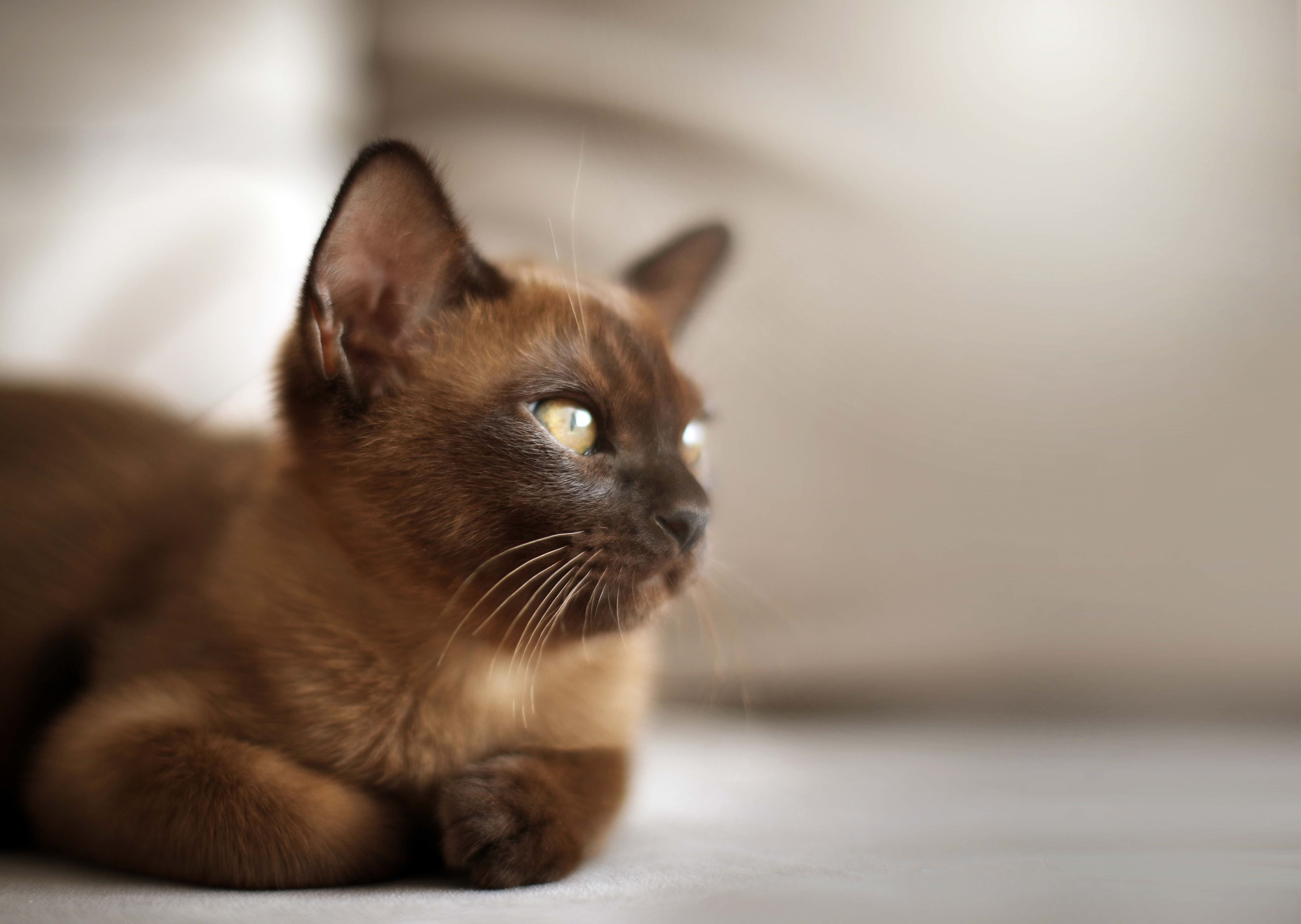
Life expectancy: 10–17 years
As one of the longest-living cat breeds, the Burmese can reach 17 years or more. These cats are typically social and vocal, plus they’re quite trainable and often enjoy bonding with their pet parents by learning tricks via clicker training or playing fetch.
3. Balinese
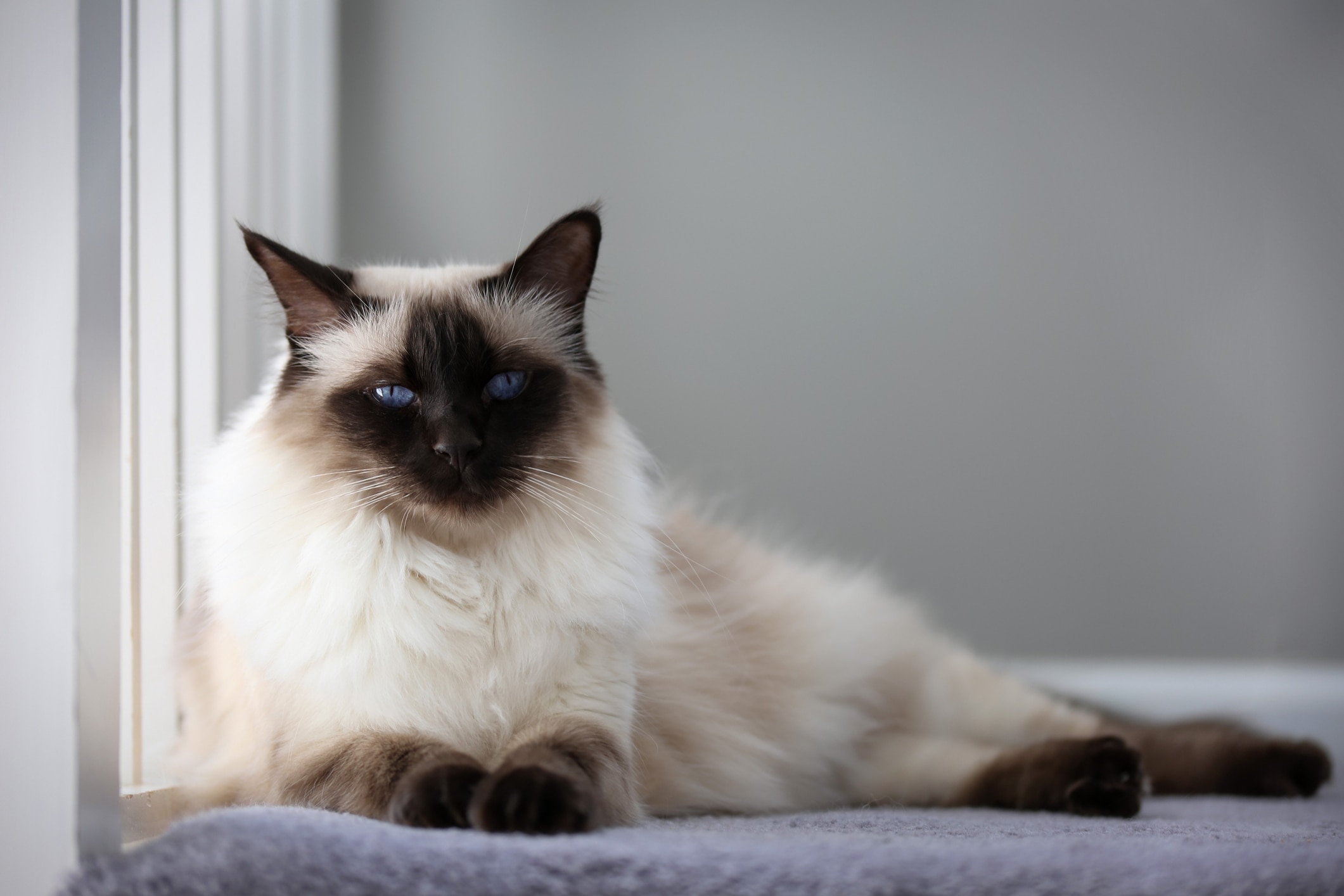
Life expectancy: 18–22 years
The Balinese is a variety of longhaired Siamese cat that’s smart, social, and can live into their 20s. However, the breed is prone to progressive retinal atrophy (PRA), which can lead to blindness, and hepatic amyloidosis (a liver disease); both conditions are most likely to show symptoms before the cat is 5–7 years old.
4. Russian Blue
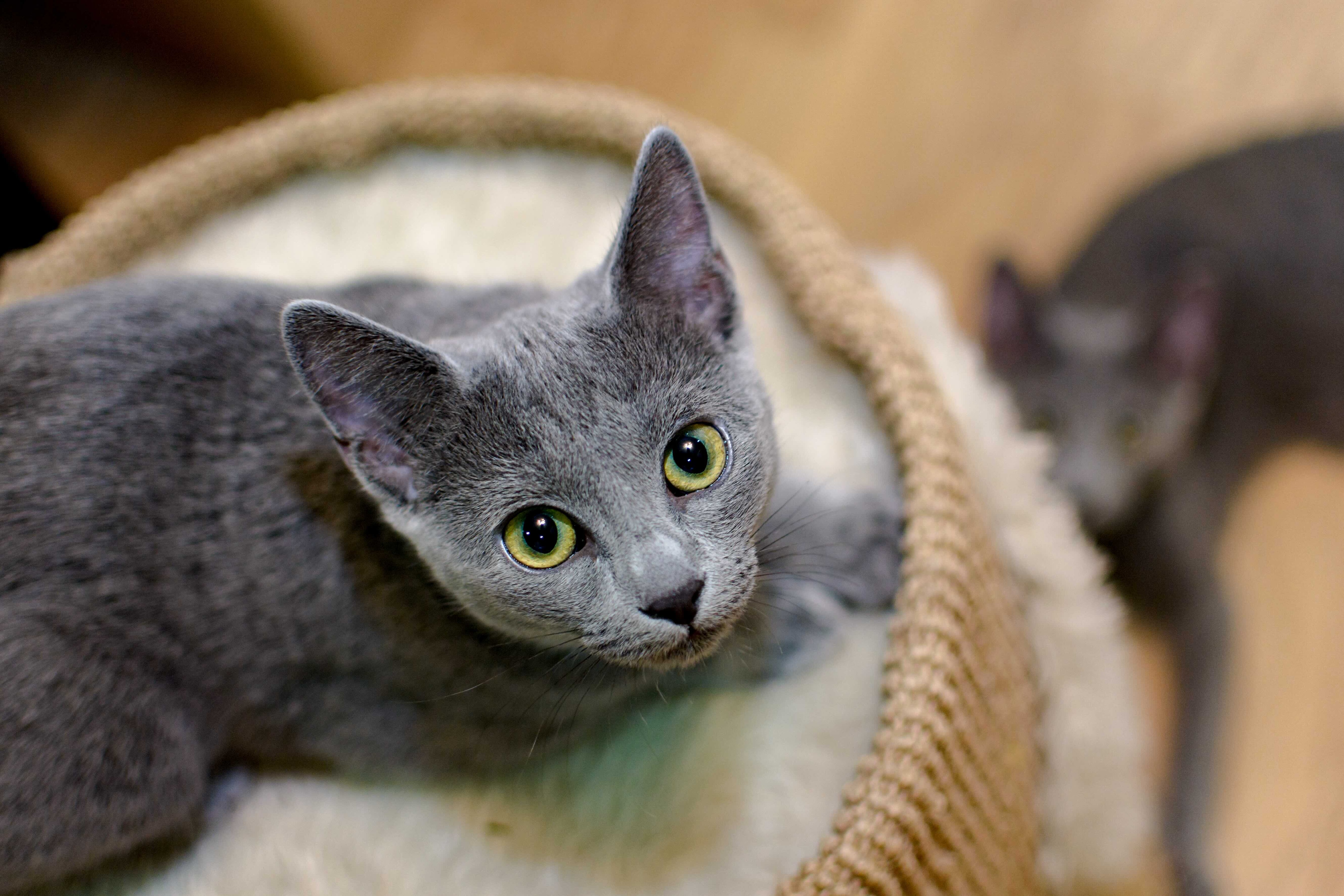
Life expectancy: 15–20 years
The characteristically steel-gray coat of the Russian Blue is one of the breed’s most striking features—and so are their eyes. Starting off gold in color, these cats have eyes that turn to deep green as they reach adulthood.
5. Ragdoll
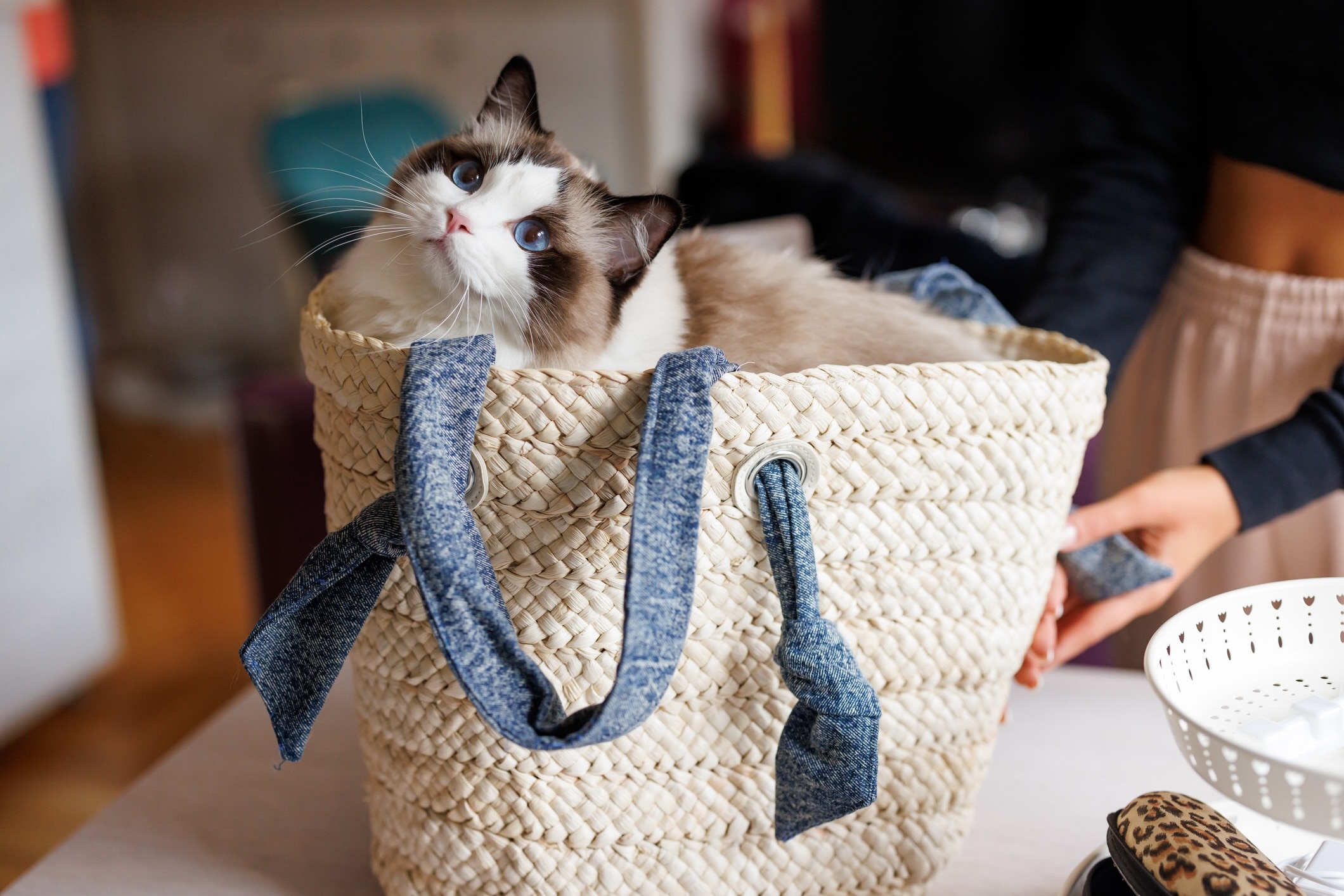
Life expectancy: 13–18 years
The affectionate and sociable Ragdoll cat usually enjoys a long and healthy life of 13–18 years. These cats don’t just have a big personality—they also tend to be larger than other cat breeds, reaching up to 20 pounds in weight.
With that in mind, it’s especially important not to let obesity become an issue, as unnecessary weight can put more strain on this large cat’s joints. But with appropriate care and nutrition, Ragdoll cats are generally very healthy cats.
6. American Shorthair
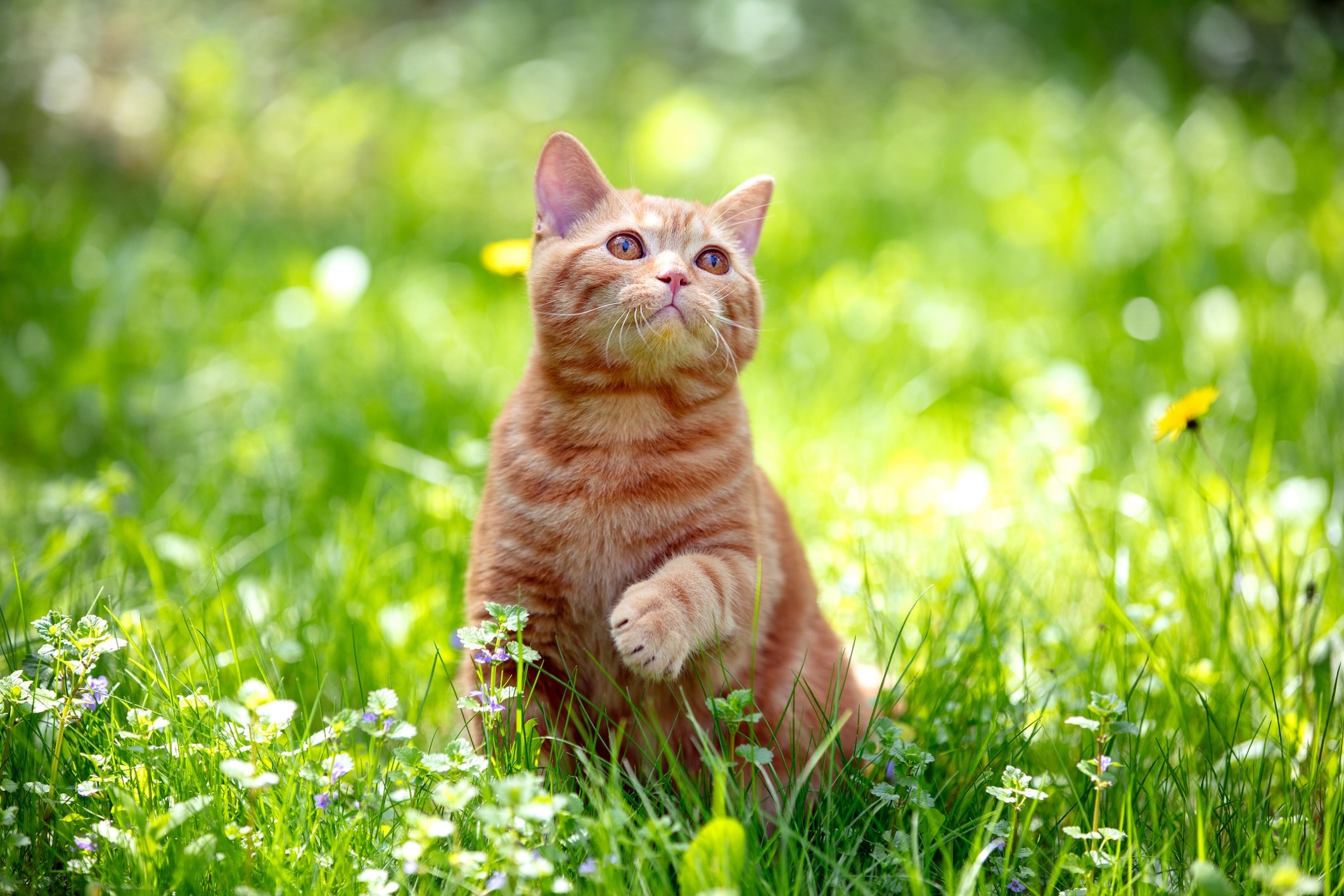
Life expectancy: 15–20 years
American Shorthair cats are a natural cat breed (meaning they developed without intentional breeding by humans). They’re one of the most popular cat breeds in the U.S. and have even spent time in the White House; an American Shorthair called India served as the “first cat” of the George W. Bush presidency and lived to be 18 years old.
This breed is known to be laid-back and low-maintenance, with an easy-to-care-for short and plush coat.
7. Savannah
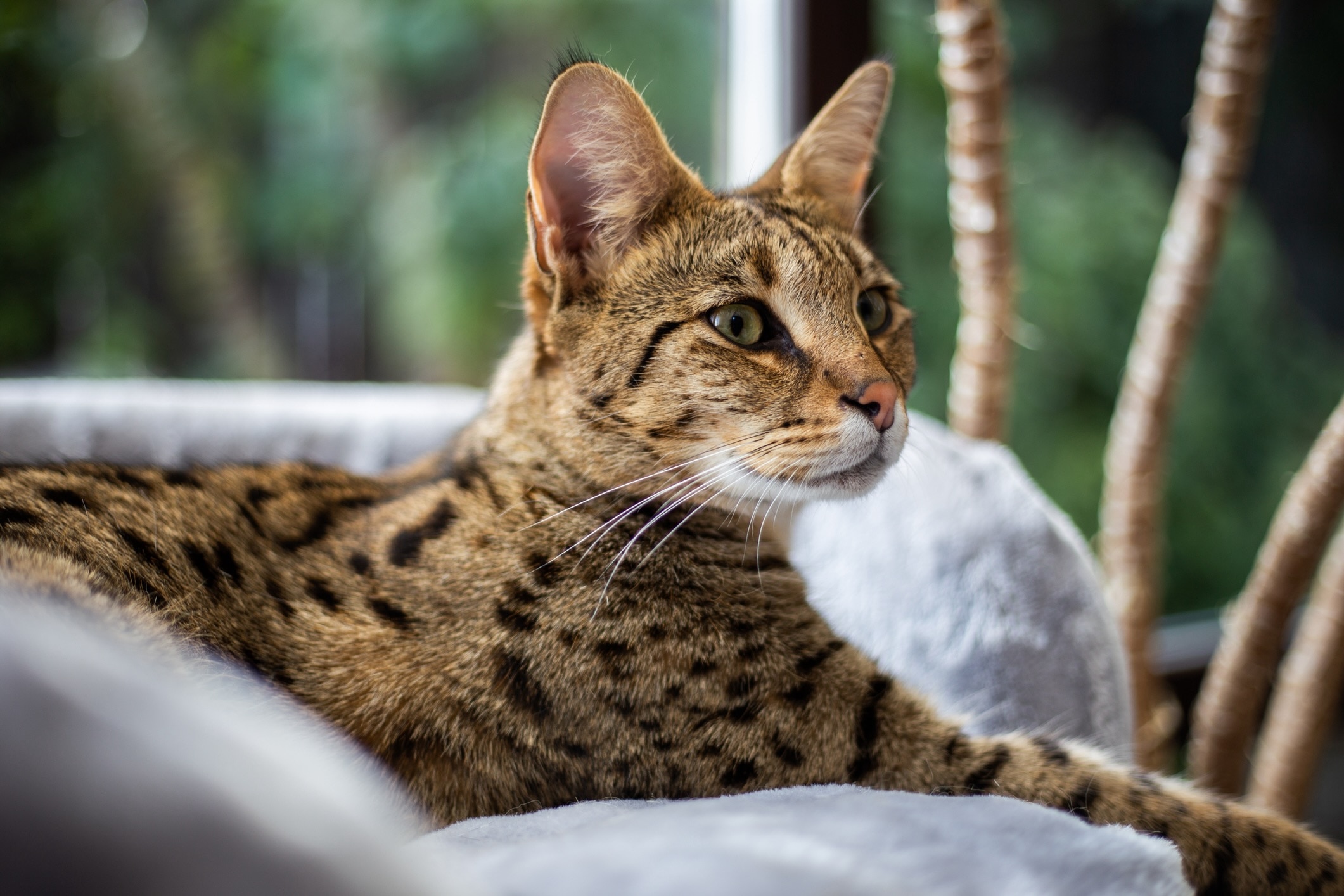
Life expectancy: 12–20 years
The Savannah cat is descended from the African Serval, which gives them their tall and lanky physique, spotted coat, large ears, and long lifespan that can reach 20 years or more.
But do your research before bringing home a Savannah kitten—the breed isn’t legal to own in all areas, and how far removed a cat is from their Serval ancestor has a big impact on their care needs and personality.
8. Bombay

Life expectancy: 9–15 years
This cat breed is all-black from tip to toes: the coat, whiskers, and paw pads are all black, with the only accent being the cat’s bright gold eye color.
Bombay cats are relatively rare and there’s not much in the way of well-documented health studies for the breed. But the basics of feline cat care—like high-quality nutrition, dental care, and regular checkups—usually lead to a lifespan reaching up to 15 years for this breed, with some Bombays living 20 years or more.
9. Turkish Angora

Life expectancy: 15–20 years
The Turkish Angora is a lively and vocal cat breed that can easily match or surpass the average cat’s lifespan—some Turkish Angora cats have been known to reach the age of 20 or beyond. These cats come in an array of stunning coat colors, but be aware that all-white cats with one or two blue eyes are at a higher risk for hereditary deafness.
10. Lykoi
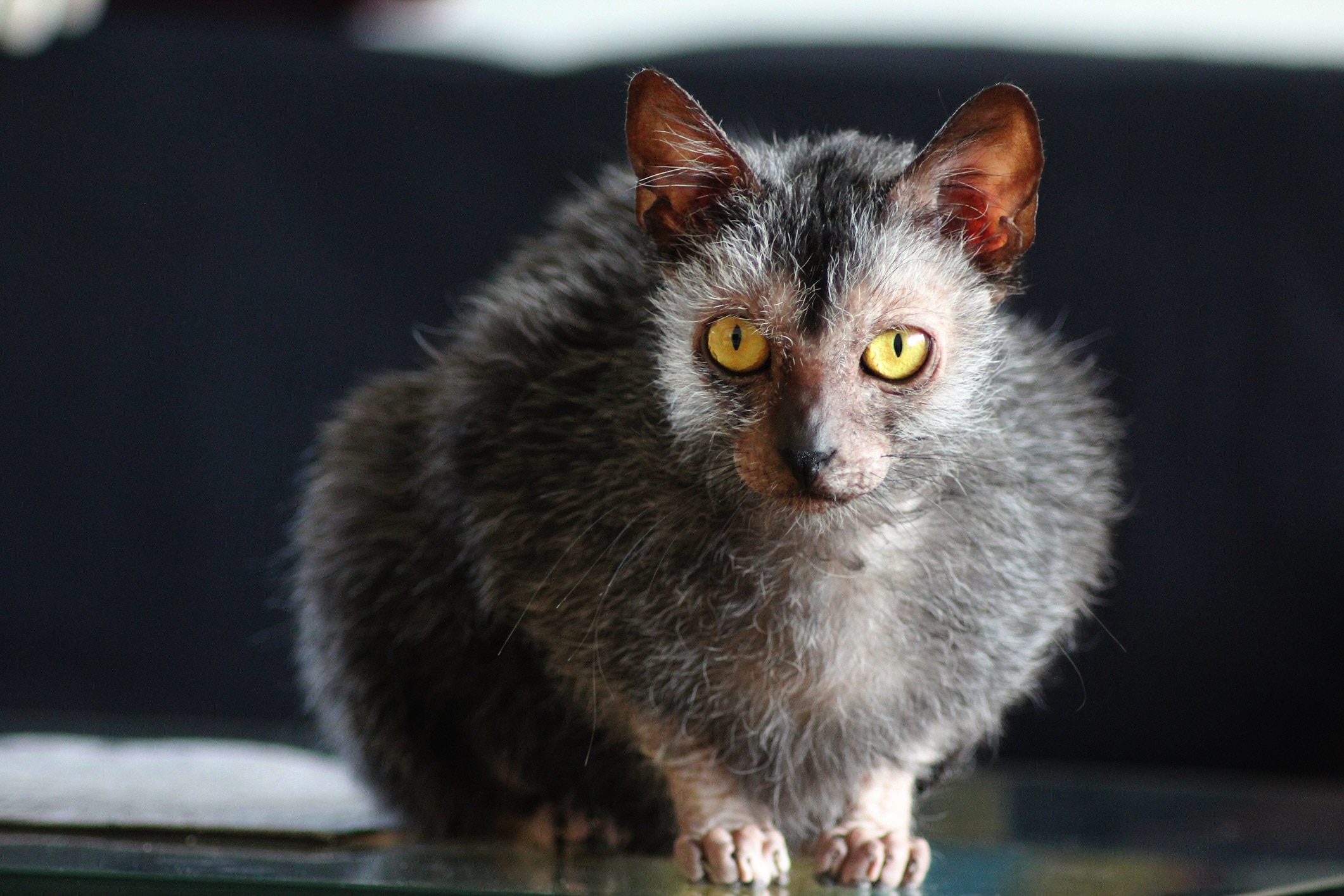
Life expectancy: 12–15 years
A more recent—and very rare—addition to the house cat world is the Lykoi. The breed was established in 2011 and is sometimes referred to as a “werewolf cat” because of their patchy, coarse-looking fur.
Lykois are known to be healthy with few hereditary conditions to worry about, and these cats can live for 15 years or more.
How To Help Your Cat Live Longer
While genetics play a role in a cat’s lifespan, how you take care of your pet also impacts their longevity and quality of life.
1. Feed High-Quality Food
Feed your cat a high-quality diet that meets the guidelines set by the Association of American Feed Control Officials (AAFCO). The food should also be appropriate for your cat’s life stage (kitten, adult, or senior).
Always measure out your cat’s meals and stick to an appropriate daily calorie count, based on your cat’s age and activity level. Your veterinarian can give you guidance on the best cat food and how much to feed your cat.
2. Keep up With Vet Visits
Don’t forgo routine vet visits, which can be invaluable in diagnosing and treating the most common cat health problems before they progress. Early detection can make all the difference in being proactive in treating various conditions.
3. Take Care of Your Cat’s Teeth
Cats with healthy teeth have a lower risk of diseases, including kidney disease and heart disease, and live a much happier life without infected teeth and gums.
It’s easy to care for your cat’s teeth with daily dental care. Ask your vet for the best cat toothbrushes, toothpaste, diet, treats, and water additives that can help keep your kitty’s mouth healthy.
4. Keep Your Cat at a Lean Body Weight
Overweight and obese cats do not live as long and have a higher risk of diseases than cats at a healthy weight. Speak with your vet about whether your cat is at their ideal lean body condition and how you can manage their weight.
5. Groom Your Cat Regularly
While felines are known for doing an admirable job of self-grooming, you’ll still want to spend time every week brushing your cat. Doing so gives you an opportunity to spot any issues with their skin, coat, eyes, or ears that might indicate a developing health problem.
Trim your cat’s nails once a month, too.
6. Keep Your Cat Inside
While many cat breeds can live to be teenagers, the lifespan of outdoor cats is much shorter. Many outdoor cats live to be only 2–5 years old due to the many dangers they face outside.
Never let your cat outside unsupervised. If you want to let your cat have supervised time outdoors, keep them on a leash and harness or within a catio, and make sure they’re up to date on flea and tick preventatives.
While there’s no foolproof formula to guarantee your feline friend a spot on the list of the longest-living cats, taking good care of your kitty can help you make the most of the years you spend together.
